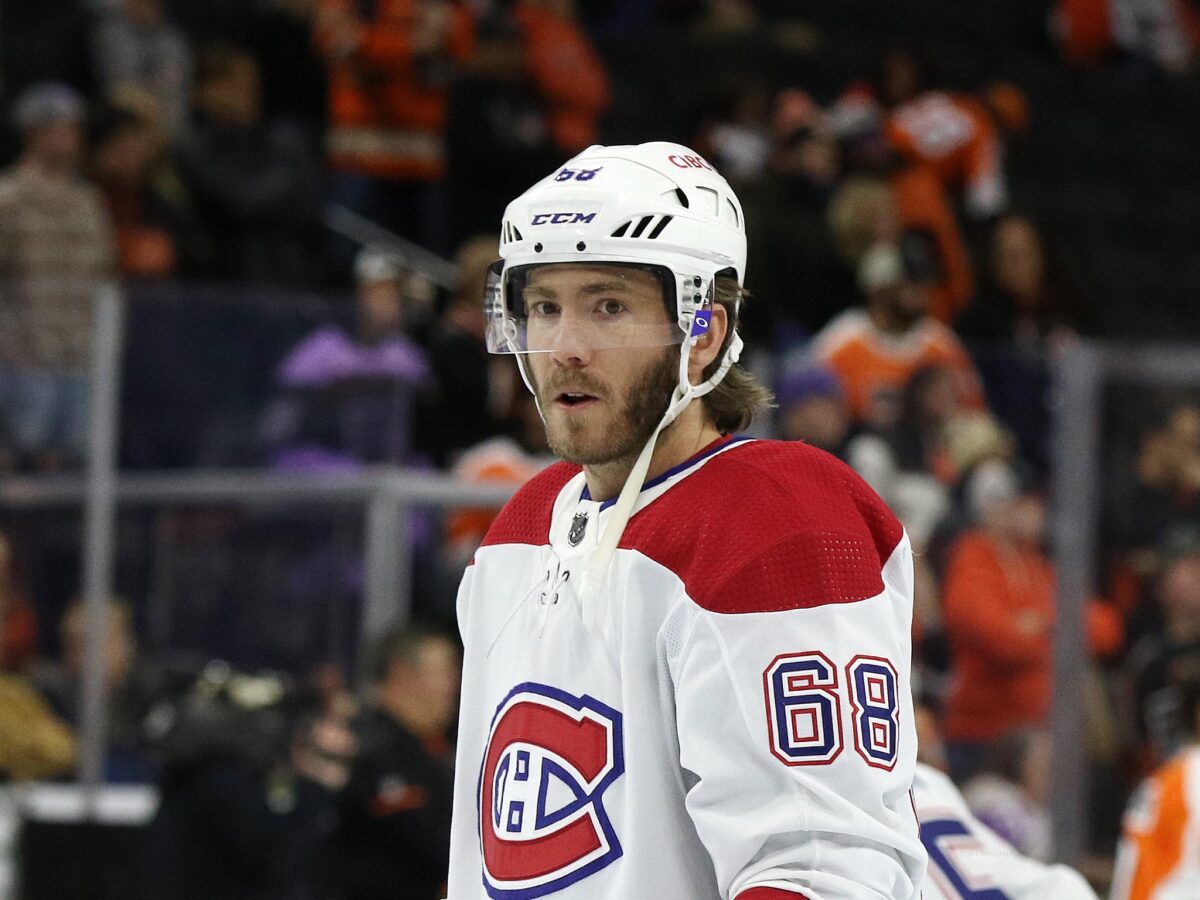The Chicago Blackhawks are approximately $16 million below the salary cap floor, with approximately nine roster spots to fill for the upcoming season. General manager Kyle Davidson’s most pressing need is a solid top six and power-play unit so projected first-overall pick Connor Bedard can thrive in his rookie season. As a result, open roster spots should be filled with short-term free-agent signings for depth, and they should take on bad contracts to add assets for the future.
Related: Blackhawks’ 2023 Free Agent Targets: Defensemen
The salary cap is only projected to go up $1 million next season to $82.5 million. This presents the perfect opportunity to add players from cap-strapped teams in need of cap space for quality assets in return. Here are some players the Blackhawks can look to trade for this offseason.
Mike Hoffman
Hoffman is a one-dimensional offensive sniper who has had a lot of success on the power play over his career. His power-play production would give the Blackhawks a capable middle-six scoring winger who can provide offence regardless of who he plays with. Hoffman’s game is similar to former Blackhawk (and Montreal Canadien) Max Domi in that he scores points but will never get confused for someone who plays a two-way game.

While the Canadiens are also a rebuilding team, they might be desperate to create cap space if they trade for disgruntled Winnipeg Jet, Pierre-Luc Dubois. They have many bloated contracts, and Hoffman seems to be the easiest to move with only one year remaining on his deal.
Anthony Mantha
Mantha would be a low-risk, high-reward, bounce-back candidate for the Blackhawks to take on. His very high $5.7 million annual average value (AAV) has insiders speculating that the Washington Capitals will need to give up an asset or two to move the 6-foot-5 forward. Mantha doesn’t play the imposing power-forward role, but he does bring a very unique size and skill combo to the table. Being on a team like Chicago with low expectations during a contract year has all the makings of a bounce-back year for the Canadian forward.
Barclay Goodrow
Barclay Goodrow could provide the toughness and proven leadership that Chicago needs. He is a capable but overpaid third-liner who the New York Rangers can no longer afford; he’s signed for $3.67 million AAV for the next four seasons. Goodrow has a 16-team no-trade clause, but this should not be a problem for Chicago who will instantly become a bigger draw with Bedard and his potential to accelerate the rebuild. I expect other teams trying to take on bloated contracts, like the Arizona Coyotes and Philadelphia Flyers, to be on Goodrow’s no-trade list.
Mikael Granlund
Granlund possesses the type of skill that general managers want in their forward core. He can play all three forward positions and on special teams. He’s also an excellent but very streaky playmaker. However, Granlund was absolutely abysmal after getting traded to the Pittsburgh Penguins this season, putting up five points in 22 games. The Penguins will likely be in the market to replace pending unrestricted free agent Jason Zucker, and if Granlund isn’t seen as the in-house replacement in the top six, he will be traded or bought out.
The newly hired president of hockey operations, Kyle Dubas, hasn’t been shy to dump salary in the past (Patrick Marleau trade) and even recently with the Blackhawks (Petr Mrazek trade). Trading for Granlund would require a significant asset as a sweetener, so a buyout might be more probable, but it will cost Pittsburgh approximately $2 million in dead cap space for four years.
Mike Reilly/Derek Forbort
Mike Reilly and Derek Forbort could garner significant assets to save Boston $6 million in cap space. Forbort would add left-handed defensive depth to a Chicago team that needs it, while Reilly is an everyday NHL defenseman who was forced out of the lineup due to the Bruins’ defensive depth.

Reilly is a Chicago native who has showcased his talent to play in the top four as a puck-moving defenseman in stretches during his career. He needs a fresh start, a coach who inspires confidence in him, and the room to make mistakes in order to be successful again. Chicago can provide all of that for Reilly, and the worst-case scenario in acquiring him would be that he helps the team reach the cap floor.
Slow and Steady Wins the Race
Assuming Bedard is selected first overall, the hardest part of the Blackhawks’ rebuild is over. Now is the time to stay the course and continue to add quality pieces and prospects to their system. Trading for bloated contracts will help the team reach the salary cap floor while also adding depth and assets that can be flipped for a modest return at the trade deadline. With a relatively flat cap, Chicago can strike while the iron is hot and take advantage of cap-strapped teams before the cap ceiling skyrockets in a few years.
